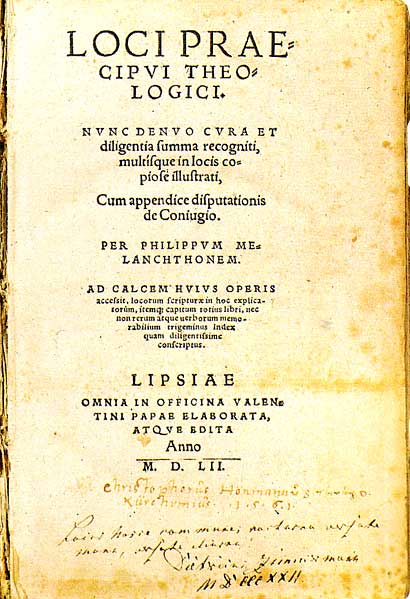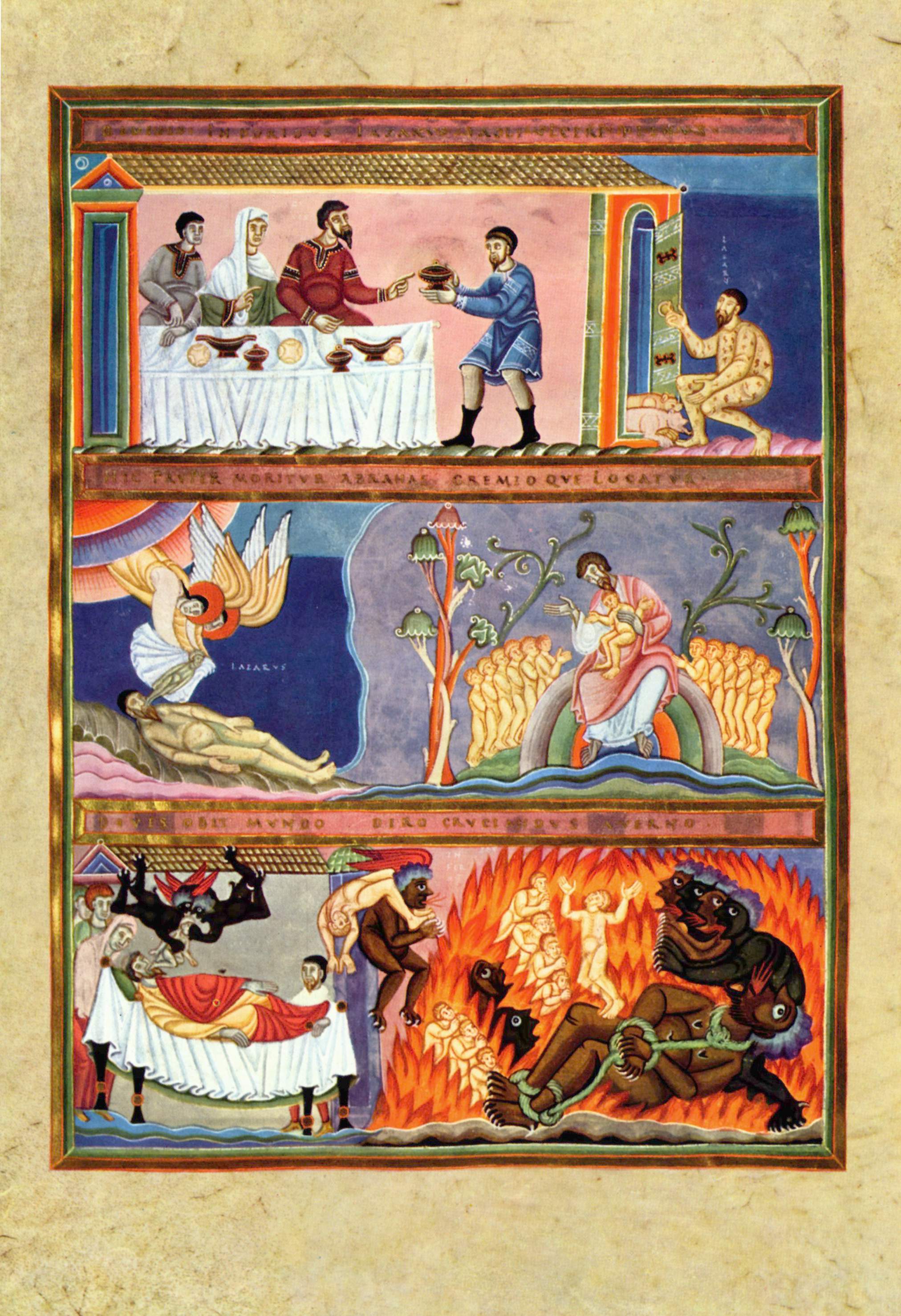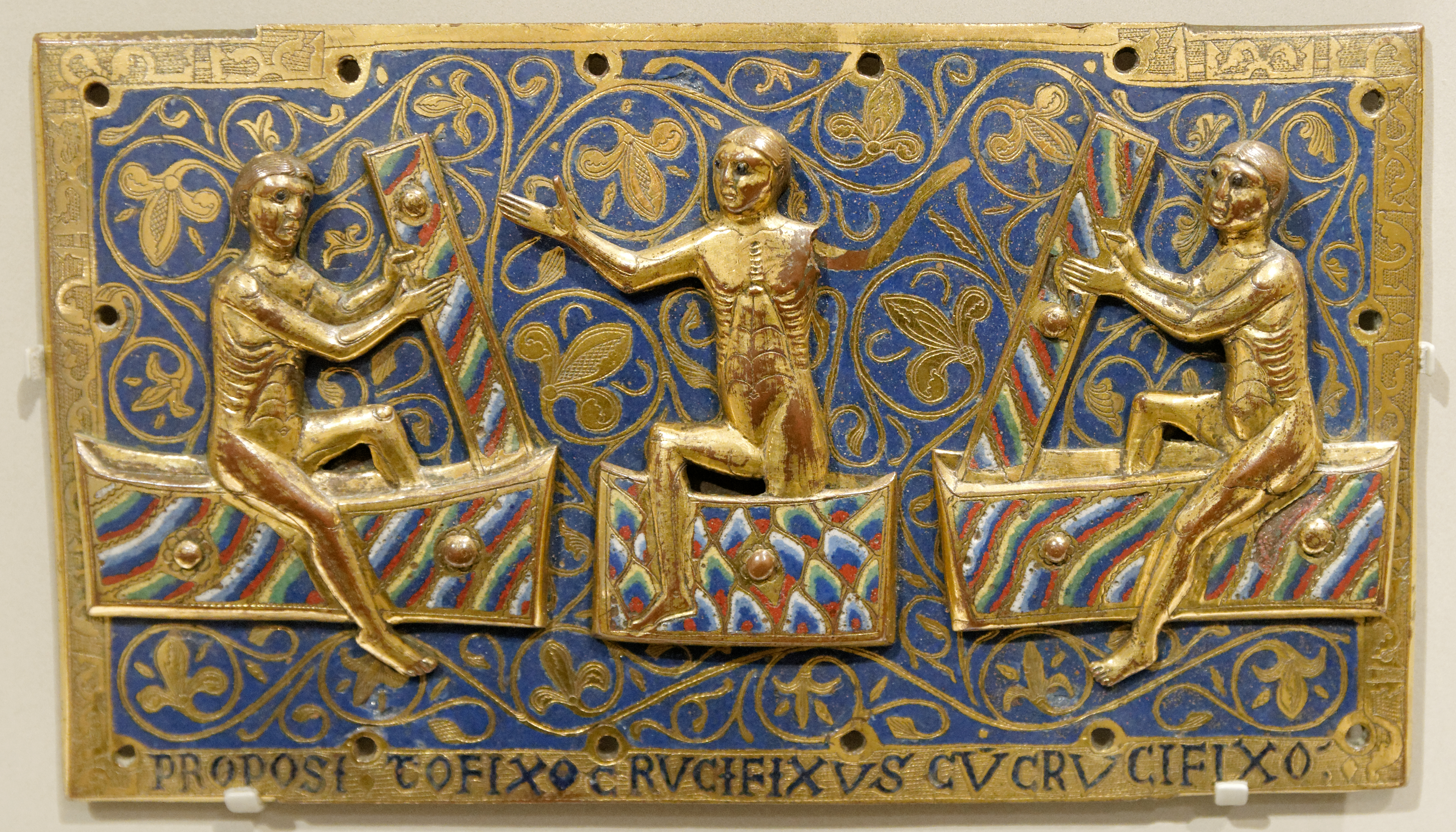|
Scholastic Lutheran Christology
Scholastic Lutheran Christology is the orthodox Lutheran theology of Jesus, developed using the methodology of Lutheran scholasticism. On the general basis of the Chalcedonian christology and following the indications of the Scriptures as the only rule of faith, the Protestant (especially the Lutheran) scholastics at the close of the sixteenth and during the seventeenth century built some additional features and developed new aspects of Christ's person. The propelling cause was the Lutheran doctrine of the real presence or omnipresence of Christ's body in the Lord's Supper, and the controversies growing out of it with the Zwinglians and Calvinists, and among the Lutherans themselves. These new features relate to the communion of the two natures, and to the states and the offices of Christ. The first was the production of the Lutheran Church, and was never adopted, but partly rejected, by the Reformed; the second and third were the joint doctrines of both, but with a very mat ... [...More Info...] [...Related Items...] OR: [Wikipedia] [Google] [Baidu] |
Lutheran Orthodoxy
Lutheran orthodoxy was an era in the history of Lutheranism, which began in 1580 from the writing of the ''Book of Concord'' and ended at the Age of Enlightenment. Lutheran orthodoxy was paralleled by similar eras in Calvinism and tridentine Roman Catholicism after the Counter-Reformation. Lutheran scholasticism was a theological method that gradually developed during the era of Lutheran orthodoxy. Theologians used the neo-Aristotelian form of presentation, already popular in academia, in their writings and lectures. They defined the Lutheran faith and defended it against the polemics of opposing parties. History Martin Luther died in 1546, and Philipp Melanchthon in 1560. After the death of Luther came the period of the Schmalkaldic War and disputes among Crypto-Calvinists, Philippists, Sacramentarians, Ubiquitarians, and Gnesio-Lutherans. Early orthodoxy: 1580–1600 The ''Book of Concord'' gave inner unity to Lutheranism, which had many controversies, mostly between Gnesi ... [...More Info...] [...Related Items...] OR: [Wikipedia] [Google] [Baidu] |
Formula Of Concord
Formula of Concord (1577) (German, ''Konkordienformel''; Latin, ''Formula concordiae''; also the "''Bergic Book''" or the "''Bergen Book''") is an authoritative Lutheran statement of faith (called a confession, creed, or "symbol") that, in its two parts (''Epitome'' and ''Solid Declaration''), makes up the final section of the Lutheran ''Corpus Doctrinae'' or Body of Doctrine, known as the Book of Concord (most references to these texts are to the original edition of 1580). The ''Epitome'' is a brief and concise presentation of the ''Formula's'' twelve articles; the ''Solid Declaration'' a detailed exposition. Approved doctrine is presented in "theses"; rejected doctrine in "antitheses." As the original document was written in German, a Latin translation was prepared for the Latin edition of the Book of Concord published in 1584. Significance and composition The promulgation and subscription of this document was a major factor in the unification and preservation of Lutheranism ... [...More Info...] [...Related Items...] OR: [Wikipedia] [Google] [Baidu] |
Hades In Christianity
Hades, according to various Christian denominations, is "the place or state of departed spirits",''Oxford Dictionary of the Christian Church'' (Oxford University Press 2005 ): ''Hades'' borrowing the name of Hades, the Greek god of the underworld. It is often associated with the Jewish concept of Sheol. In the Bible Septuagint In the Septuagint (an ancient translation of the Hebrew Bible into Greek), the Greek term ᾅδης (Hades) is used to translate the Hebrew term שאול (Sheol) in almost all instances, only three of them are not matched with Hades: (γῆ, "earth, land"), (θάνατος, "death") and (βόθρου or λάκκος, "pit".) New Testament The Hebrew phrase לא־תעזב נפשׁי לשׁאול ("you will not abandon my soul to Sheol") in is quoted in the Koine Greek New Testament, as οὐκ ἐγκαταλείψεις τὴν ψυχήν μου εἰς ᾅδου ("you will not abandon my soul to Hades"). In the Textus Receptus version of the New ... [...More Info...] [...Related Items...] OR: [Wikipedia] [Google] [Baidu] |
Ascension Of Jesus Christ
The Ascension of Jesus (anglicized from the Vulgate la, ascensio Iesu, lit=ascent of Jesus) is the Christian teaching that Christ physically departed from Earth by rising to Heaven, in the presence of eleven of his apostles. According to the New Testament narrative, the Ascension occurred on the fortieth day counting from the resurrection. In the Christian tradition, reflected in the major Christian creeds and confessional statements, God exalted Jesus after his death, raising him from the dead and taking him to Heaven, where Jesus took his seat at the right hand of God. In Christian art, the ascending Jesus is often shown blessing an earthly group below him, signifying the entire Church. The Feast of the Ascension is celebrated on the 40th day of Easter, always a Thursday; some Orthodox traditions have a different calendar up to a month later than in the Western tradition, and while the Anglican Communion continues to observe the feast, many Protestant churches have abandone ... [...More Info...] [...Related Items...] OR: [Wikipedia] [Google] [Baidu] |
Resurrection
Resurrection or anastasis is the concept of coming back to life after death. In a number of religions, a dying-and-rising god is a deity which dies and is resurrected. Reincarnation is a similar process hypothesized by other religions, which involves the same person or deity coming back to live in a different body, rather than the same one. The resurrection of the dead is a standard eschatological belief in the Abrahamic religions. As a religious concept, it is used in two distinct respects: a belief in the resurrection of individual souls that is current and ongoing ( Christian idealism, realized eschatology), or else a belief in a singular resurrection of the dead at the end of the world. Some believe the soul is the actual vehicle by which people are resurrected. The death and resurrection of Jesus is a central focus of Christianity. Christian theological debate ensues with regard to what kind of resurrection is factual – either a ''spiritual'' resurrection with ... [...More Info...] [...Related Items...] OR: [Wikipedia] [Google] [Baidu] |
Circumcision
Circumcision is a surgical procedure, procedure that removes the foreskin from the human penis. In the most common form of the operation, the foreskin is extended with forceps, then a circumcision device may be placed, after which the foreskin is wikt:excise, excised. Topical or locally injected anesthesia is generally used to reduce pain and stress (physiology), physiologic stress. It is usually elective surgery, elective, performed as preventive healthcare, a Religious law, religious rite, or Culture, cultural practice. It is also an option for cases of phimosis, other Pathology, pathologies that do not resolve with other treatments, and chronic urinary tract infections (UTIs). The procedure is contraindicated in cases of certain genital structure abnormalities or poor general health. Circumcision is associated with reduced rates of sexually transmitted infections and urinary tract infections. This includes decreasing the incidence of Carcinogenesis, cancer-causing forms of ... [...More Info...] [...Related Items...] OR: [Wikipedia] [Google] [Baidu] |
Black Rubric
The term Black Rubric is the popular name for the declaration found at the end of the "Order for the Administration of the Lord's Supper" in the ''Book of Common Prayer'' (BCP), the Church of England's liturgical book. The Black Rubric explains why communicants should kneel when receiving Holy Communion and excludes possible misunderstandings of this action. The declaration was composed in 1552, but the term dates from the 19th century when the medieval custom of printing the rubrics in red was followed in editions of the BCP while the declaration was printed in black. History In September 1552, after Parliament had approved the Second Prayer Book of Edward VI, John Knox and others argued before the Privy Council that the Holy Communion should be received sitting; but were refuted by Archbishop Thomas Cranmer. As a result of this clash, the council acted on its own authority and ordered the inclusion of the declaration in the new prayer book. The first copies had already been prin ... [...More Info...] [...Related Items...] OR: [Wikipedia] [Google] [Baidu] |
Rhetoric
Rhetoric () is the art of persuasion, which along with grammar and logic (or dialectic), is one of the three ancient arts of discourse. Rhetoric aims to study the techniques writers or speakers utilize to inform, persuade, or motivate particular audiences in specific situations. Aristotle defines rhetoric as "the faculty of observing in any given case the available means of persuasion" and since mastery of the art was necessary for victory in a case at law, for passage of proposals in the assembly, or for fame as a speaker in civic ceremonies, he calls it "a combination of the science of logic and of the ethical branch of politics". Rhetoric typically provides heuristics for understanding, discovering, and developing arguments for particular situations, such as Aristotle's three persuasive audience appeals: logos, pathos, and ethos. The five canons of rhetoric or phases of developing a persuasive speech were first codified in classical Rome: invention, arrangement, style ... [...More Info...] [...Related Items...] OR: [Wikipedia] [Google] [Baidu] |
Kenosis
In Christian theology, ''kenosis'' () is the 'self-emptying' of Jesus. The word () is used in Philippians 2:7: " made himself nothing" (NIV), or " eemptied himself" (NRSV), using the verb form (), meaning "to empty". The exact meaning varies among theologians. The less controversial meaning is that he emptied his own desires and becoming entirely receptive to God's divine will, "obedient to the point of death— even death on a cross." Philippians encourages other Christians to be similarly willing to submit to divine will, even if it comes at great personal cost. The phrase is also used to explain the human side of Jesus: that Jesus, to truly live as a mortal, had to have voluntarily bound use of his divine powers in some way, emptying himself. Philippians says that "though esuswas in the form of God, edid not regard equality with God as something to be exploited," suggesting that Jesus was not "abusing" his divine status to avoid the implications of a mortal life. Thi ... [...More Info...] [...Related Items...] OR: [Wikipedia] [Google] [Baidu] |
Electorate Of Saxony
The Electorate of Saxony, also known as Electoral Saxony (German: or ), was a territory of the Holy Roman Empire from 1356–1806. It was centered around the cities of Dresden, Leipzig and Chemnitz. In the Golden Bull of 1356, Emperor Charles IV designated the Duchy of Saxe-Wittenberg an electorate, a territory whose ruler was one of the prince-electors who chose the Holy Roman emperor. After the extinction of the male Saxe-Wittenberg line of the House of Ascania in 1422, the duchy and the electorate passed to the House of Wettin. The electoral privilege was tied only to the Electoral Circle, specifically the territory of the former Duchy of Saxe-Wittenberg. In the 1485 Treaty of Leipzig, the Wettin noble house was divided between the sons of Elector Frederick II into the Ernestine and Albertine lines, with the electoral district going to the Ernestines. In 1547, when the Ernestine elector John Frederick I was defeated in the Schmalkaldic War, the electoral district and el ... [...More Info...] [...Related Items...] OR: [Wikipedia] [Google] [Baidu] |
Martin Chemnitz
Martin Chemnitz (9 November 1522 – 8 April 1586) was an eminent second-generation German, Evangelical Lutheran, Christian theologian, and a Protestant reformer, churchman, and confessor. In the Evangelical Lutheran tradition he is known as ''Alter Martinus,'' the "Second Martin": ''Si Martinus non fuisset, Martinus vix stetisset'' ("If Martin hemnitzhad not come along, Luther would hardly have survived") goes a common saying concerning him. He is listed and remembered in the Calendar of Saints and Commemorations in the Liturgical Church Year as a pastor and confessor by both the Evangelical Lutheran Church in America and Lutheran Church–Missouri Synod. Early life and education Chemnitz, born in Treuenbrietzen in Brandenburg to Paul and Euphemia Chemnitz, was the last of three children. His older siblings' names were Matthew and Ursula. His father was a successful merchant who died when Martin was eleven: thereafter, the family suffered from financial difficulties. When ... [...More Info...] [...Related Items...] OR: [Wikipedia] [Google] [Baidu] |
Humiliation Of Christ
The Humiliation of Christ is a Protestant Christian doctrine that consists of the rejection and suffering that Jesus received and accepted, according to Christian belief. Within it are included his incarnation, suffering, death, burial, and sometimes descent into hell. State of humiliation Calvinist theology draws a distinction between Christ's "state of humiliation", which consisted of his suffering and death, and his "state of exaltation", which consisted of his resurrection, ascension, and heavenly session. According to the Westminster Shorter Catechism, Christ’s humiliation "consisted in his being born, and that in a low condition, made under the law, undergoing the miseries of this life, the wrath of God, and the cursed death of the cross; in being buried, and continuing under the power of death for a time." The distinction between the states of humiliation and exaltation does present difficulties in explaining the idea that Christ won a victory on the cross. Peter ... [...More Info...] [...Related Items...] OR: [Wikipedia] [Google] [Baidu] |





.jpg)